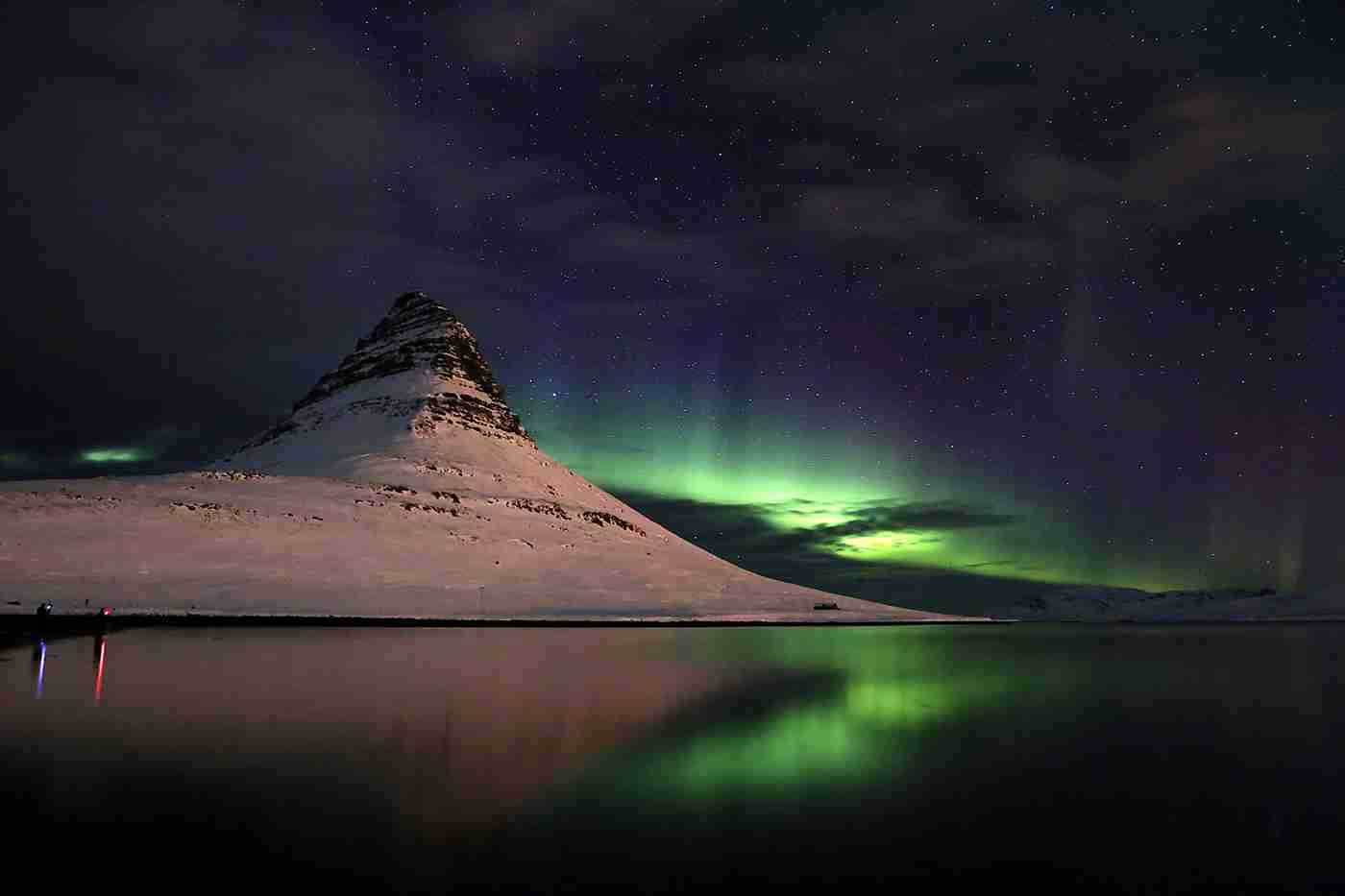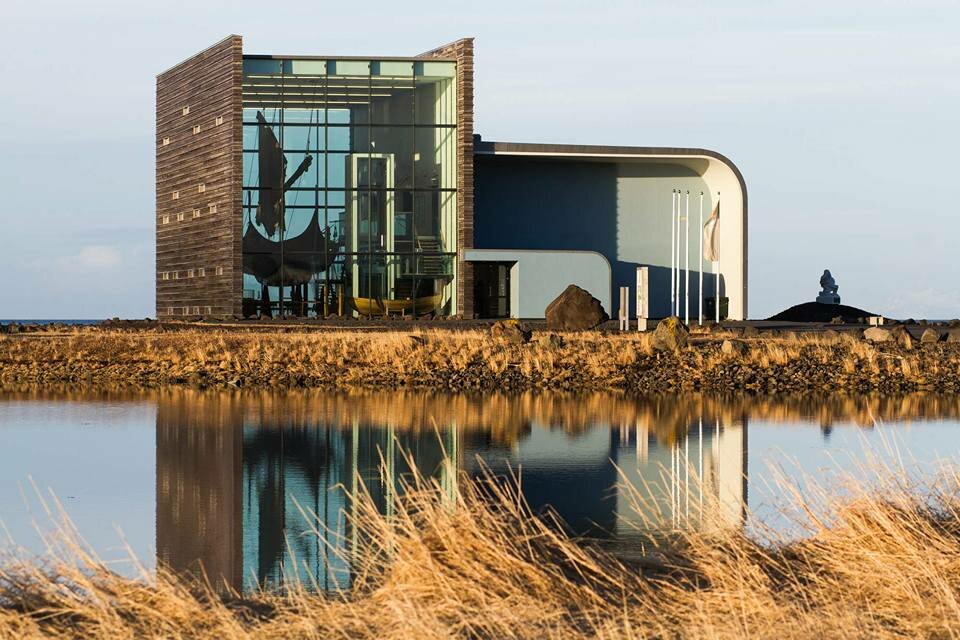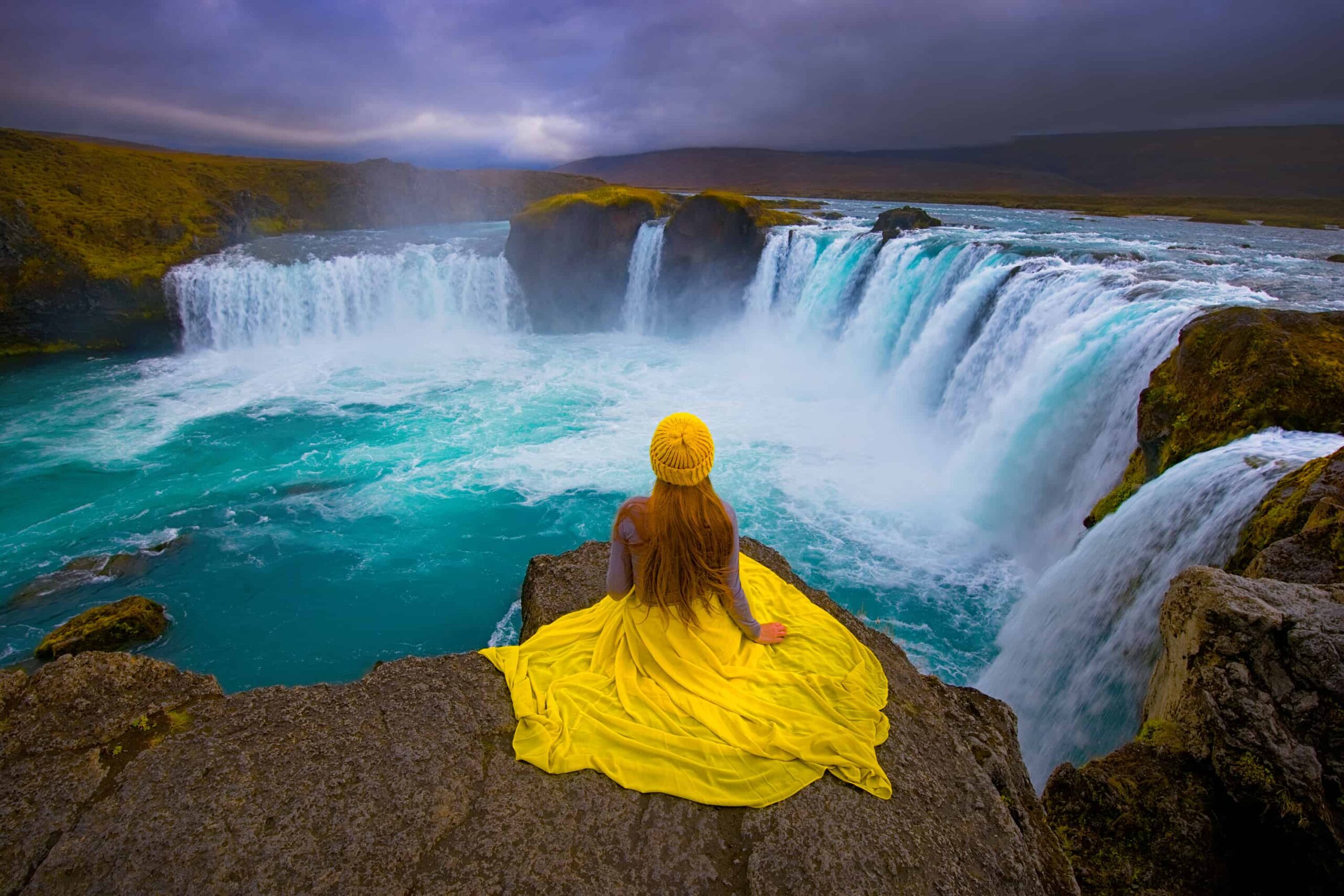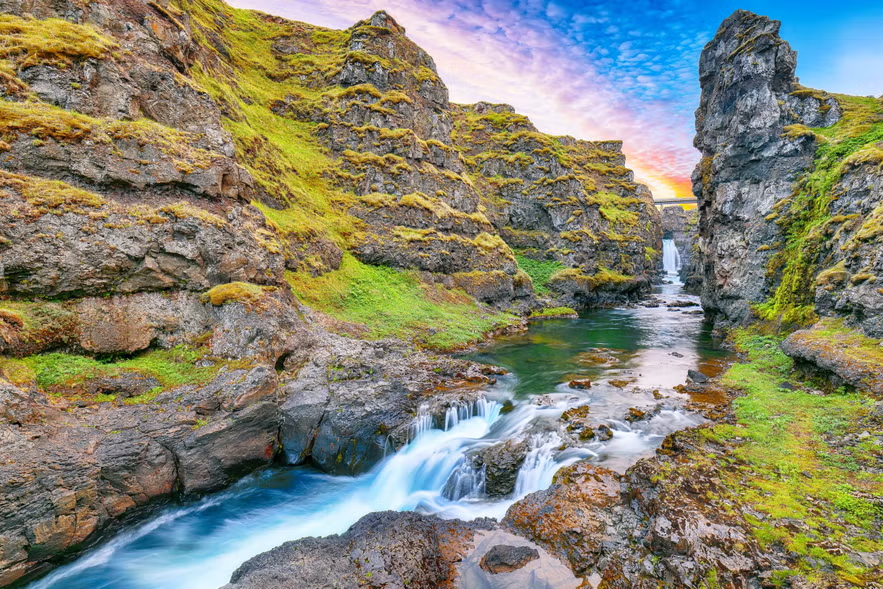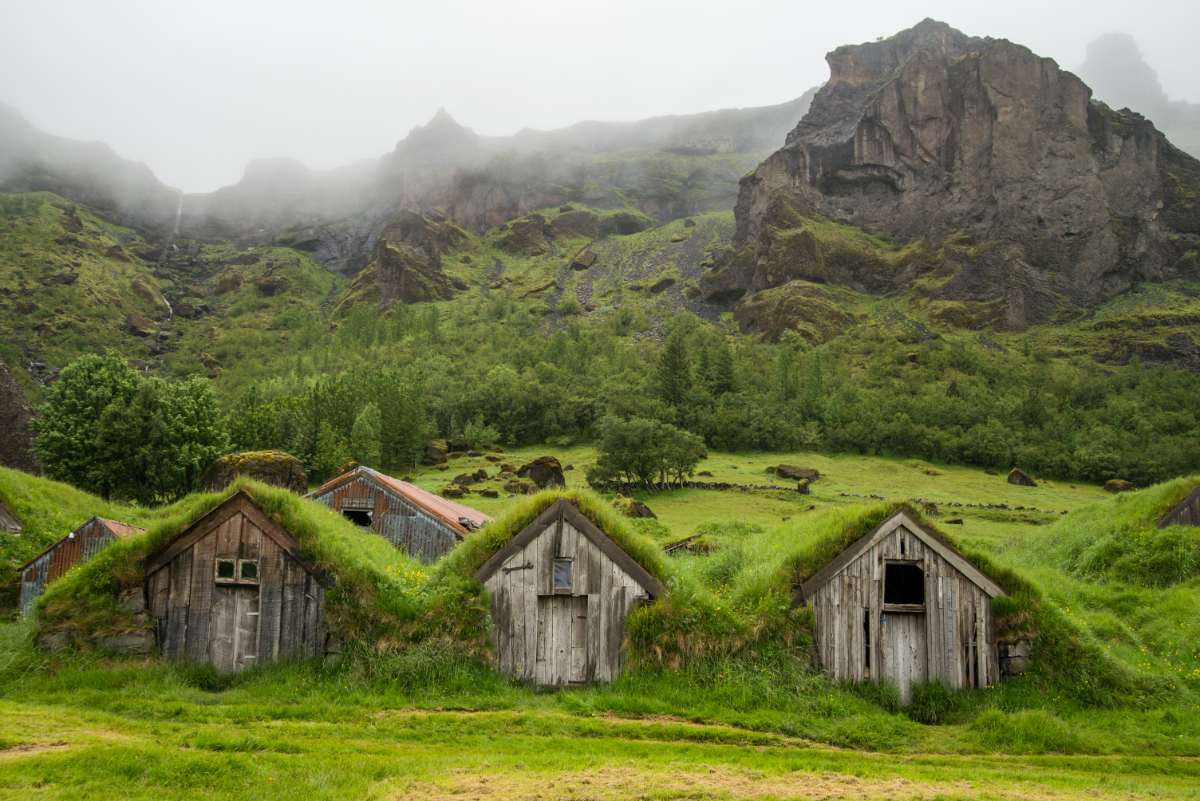The Ultimate Guide to Sightseeing in Reykjavik
Category
Categories
Travel Guide
Type
Glacier Lagoons, Bird Sights
Destination
Vatnajokull national Park
High season
Jun - Aug & Nov - Jan
Area
18 sq km
Outflow
Atlantic Ocean
Popular articles

Sightseeing in Reykjavík
Iceland offers a variety of sightseeing opportunities in Reykjavík, the capital city known for its vibrant culture and stunning landscapes. Explore the city’s iconic landmarks, such as Hallgrímskirkja Church and Harpa Concert Hall, which showcase unique architecture and artistic design.
City Center
Discover Reykjavík’s city center, filled with charming cafes, boutique shops, and colorful street art. Take a leisurely stroll along the Old Harbor and soak in the picturesque views of the surrounding mountains and sea. Don’t miss the chance to visit the Sun Voyager sculpture and Parliament House, significant symbols of Icelandic history and culture.
Museums
Immerse yourself in Iceland’s rich heritage by visiting the city’s museums. From the National Museum of Iceland to the Settlement Exhibition, there are plenty of opportunities to learn about the country’s history and traditions. Art enthusiasts will appreciate the Reykjavík Art Museum and its collection of contemporary Icelandic art.
Outdoor Activities
For nature lovers, Reykjavík offers a range of outdoor activities to enjoy. Explore the nearby geothermal pools and relax in the warm waters, or take a hike along the scenic trails surrounding the city. Adventurous visitors can even go whale watching from the Old Harbor or embark on a Northern Lights tour in the evening.
Culinary Delights
Indulge in Iceland’s culinary scene by sampling traditional dishes and local delicacies. From hearty seafood soups to delectable pastries, Reykjavík’s restaurants offer a diverse range of flavors to satisfy every palate. Be sure to try the famous Icelandic hotdog at Bæjarins Beztu Pylsur for a truly authentic experience.
Exploring Reykjavík’s Iconic Sights
Reykjavík, Iceland’s vibrant capital, offers a mix of art, history, and culture that captivates visitors. While Iceland is renowned for its natural wonders like the Northern Lights, glaciers, waterfalls, and volcanoes, Reykjavík has its own charm worth exploring.
Visitors to Reykjavík can immerse themselves in a city full of surprises and attractions suited to various interests. To make the most of your visit, consider joining a Reykjavík walking tour led by knowledgeable guides who can provide local insights about the city.
Enthusiasts of history will be fascinated by the historical buildings and remnants of the Viking and medieval eras; those interested in culture will enjoy attractions like the Harpa Concert Hall and Hallgrimskirkja Church. Art lovers will discover a plethora of remarkable statues, sculptures, and street art across Reykjavík; and nature enthusiasts can admire stunning landscapes within the city limits.
However, the allure of exploring Reykjavík goes beyond just the tourist spots on a sightseeing expedition. The city’s charm lies in its diverse characteristics and delightful contrasts.
Contrasting Architectural Styles
Traditional old houses boasting vibrant tin roofs contrast with contemporary, sleek new buildings exuding elegance and modernity. The narrow, hilly streets lined with a mix of old and new structures are interspersed with expansive green areas. Serene spots for reflection are just a short stroll away from the bustling city center.
Top Reykjavik Tours
The capital city of Iceland, Reykjavik, offers a unique blend of a close-knit community and a modern metropolis. In addition to its captivating sites and natural beauty, Reykjavik boasts a thriving cultural scene with numerous galleries, museums, boutiques, bars, and a vibrant calendar of live events and festivals. This combination makes Reykjavik stand out as a prominent cultural hub on the global stage.
Exploring Reykjavík’s Attractions
Discovering the sights of Reykjavík is a diverse and expanding experience due to the increasing number of visitors to the city. With an estimated two million people expected to visit annually, there are various tailored tours to accommodate the wide range of preferences that come with such a large influx of tourists.
Enjoy guided walking tours available year-round, leading you to notable landmarks; some tours are complimentary, while others offer private options with the possibility to include additional cultural experiences like beer sampling.
Explore Reykjavík in Style
Discover Reykjavík in a unique way with a range of transportation options available to suit different preferences. From hop-on, hop-off buses for flexibility to guided minibus tours and private car journeys, there’s something for everyone. For the more adventurous, biking tours offer a fun way to explore the city.
For those seeking a bit of thrill and a bird’s eye view of Reykjavík, ‘flightseeing’ tours provide an exciting experience. Whether by helicopter or plane, these tours depart from Reykjavík’s Domestic Airport, offering a convenient and exhilarating experience throughout the year in good weather conditions.
Explore Reykjavik at Your Own Pace
If you prefer a more personalized experience, you can choose to explore Reykjavik independently, focusing on the areas that interest you the most. Whether you’re into history, culture, art, or nature, you can customize your visit to suit your preferences.
Iceland Culture Tours
Experience the richness of Icelandic culture with our top culture tours. Immerse yourself in the unique traditions and heritage of Iceland through a variety of cultural experiences. From exploring traditional Viking sites to witnessing contemporary Icelandic art, our tours offer a diverse range of cultural activities for all interests.
Local Art and Music Scenes
Discover the vibrant art and music scenes in Iceland with our local tours. Uncover the hidden gems of Icelandic creativity as you visit art galleries, music venues, and meet local artists and musicians. From folk music to modern art, Iceland’s cultural scene is waiting to be explored.
Culinary Experiences
Indulge in the flavors of Iceland with our culinary tours. Taste traditional Icelandic dishes, sample local delicacies, and learn about the country’s unique culinary heritage. From seafood to traditional Icelandic skyr, our culinary experiences will delight your taste buds and introduce you to the delicious side of Icelandic culture.
Historic Locations in Reykjavík
According to the Book of Settlements, Reykjavík has been inhabited since 874 AD, giving it a rich historical background that influences many of its popular attractions. From the site of the Reykjavík Summit, where plans to end the Cold War began, to the world’s longest-operating parliament, and remnants of Viking settlements dating back to the 10th century, Reykjavík boasts a variety of historical sites that will captivate history enthusiasts.
Höfði House
Welcome To Iceland’s Höfði House stands out as a crucial historical site in the country with global significance. Though originally serving as Iceland’s French Consulate, its importance escalated in 1986 beyond its unassuming facade. This location hosted the Reykjavík Summit, where President Reagan and Secretary Gorbachev convened to discuss an international ballistic missile ban amidst the Cold War era.
Peace Talks in Höfði House
Although the negotiations ultimately failed, they did reveal the willingness of both parties to compromise. This led to the signing of the 1987 Intermediate-Range Nuclear Forces Treaty, making the Summit in Höfði House a pivotal moment. Some even argue that their encounter marked the start of the Cold War’s conclusion.
The Alþingi and Cathedral
In the heart of the city, visitors can explore the Icelandic Parliament known as Alþingi and Reykjavík’s Cathedral located side by side. Established in 1849, the Parliament was moved to Reykjavík, consolidating Iceland’s power after residing in Þingvellir National Park for more than seven centuries.
Renowned as the oldest parliament globally, Alþingi often showcases the workings of democracy, with frequent protests taking place outside the building. Some of these demonstrations have gained international attention, particularly during events like the economic collapse and the Panama Papers scandal.
Reykjavík Cathedral: A Historical Gem
Reykjavík Cathedral is often underestimated, overshadowed by Hallgrímskirkja in the cityscape. Despite its modest appearance, this historic church, dating back to 1796, holds a significant place in Reykjavík’s religious heritage with its unassuming Lutheran architecture.
Iceland’s Prime Minister’s Office and Menntaskólinn í Reykjavik
The official Office of the Prime Minister, known as Stjórnarráðshúsið, has been situated on Lækjartorg next to the downtown area since 1904. This central location, devoid of fencing or visible security measures, reflects Iceland’s reputation for safety and tranquility. However, incidents of vandalism, like toilet paper and graffiti, may indicate public dissatisfaction with the current government.
History of Menntaskólinn í Reykjavík
The office is situated on the street where Iceland’s oldest school, Menntaskólinn í Reykjavík, is located. Founded in 1056 in Skálholt, the school was later moved to Reykjavík in 1786 before finally settling at its present site in 1846.
The Ancient Longhouse Ruins
While this selection typically steers clear of museums as tourist destinations, the Settlement Exhibition in Reykjavík is a must-see for history enthusiasts. Visitors can marvel at the archaeological remains of the oldest settlement in the Reykjavík region, some artifacts dating back to the 9th Century. Notably, there is a remarkably well-preserved hall and wall fragment from a 10th Century longhouse.
Entry to the Settlement Exhibition costs 1600 ISK for adults, with free admission for individuals under 17 and over 67. Situated on Aðalstræti, the oldest street in Reykjavík, this exhibition is surrounded by buildings dating back to the mid-18th Century.
Welcome To Iceland
Laugavegur is the primary shopping street in Reykjavík, famous for its upscale shops, dining options, and bars. It holds historical significance as one of Iceland’s oldest streets, with a name meaning ‘Wash Road’ or ‘Water Road’ due to its past use for cleaning clothes in the nearby hot springs of Laugardalur.
Constructed in 1885, Laugavegur still features numerous historic buildings, including Reykjavík’s oldest restaurant, Prikið, and the former home of Halldor Laxness, Iceland’s sole Nobel Prize-winning author.
Cultural Attractions in Reykjavík
During the 20th and 21st centuries, Reykjavík saw a cultural renaissance. Before World War Two, the city lacked significant landmarks, architectural beauty, or artistic venues for social gatherings. However, post-war developments and a growing focus on tourism led to a rapid transformation of Reykjavík. This culminated in its designation as one of the nine European Cities of Culture in 2000.
Hallgrimskirkja Church
Hallgrimskirkja Church stands tall as one of Reykjavík’s most iconic structures. Rising to 74.5 meters, it ranks among the tallest buildings in the country, enhanced by its elevated location on a hill. Consecrated in 1986 after a 41-year construction period, this Lutheran Church pays tribute to the 17th Century Icelandic poet and clergyman Hallgrímur Pétursson.
The charm of this church emanates from its blend of influences in design. Drawing from Icelandic heritage, it combines the simplicity of Protestant architecture, the distinctive hexagonal basalt formations found throughout the country (like those at Svartifoss Waterfall), and the symbolic shape of Þór’s hammer, representing the Old Norse God of Thunder.
Explore the iconic Hallgrímskirkja in Reykjavik, a must-visit attraction in Iceland’s capital. This stunning church welcomes visitors for free, offering a glimpse into its vast hall adorned with tasteful art and an enormous organ.
For a truly breathtaking experience, ascend the tower for panoramic views of Reykjavik’s colorful tin roofs and the surrounding natural beauty. The tower admission costs 900 ISK for adults and 100 ISK for children aged 7 to 14, creating a memorable experience for all visitors.
Harpa Concert Hall
Ever since its inauguration in 2011, Harpa has rivaled Hallgrímskirkja to be Reykjavík’s most iconic structure. Its contemporary design, featuring a glass facade with variously shaped windows, mimics Iceland’s basalt landscapes. The venue’s exceptional acoustics enhance the performances of the Symphony Orchestra and National Opera, both housed within its walls.
Construction Challenges and Success
It took Welcome To Iceland four years to complete due to the 2007/8 financial crash, which lengthened the process. Initially, there were concerns about halting construction to save costs. However, since its completion, the venue has become profitable, hosting various events like concerts from international artists, ballet, comedy performances, and popular festivals such as Airwaves and Sónar.
National Theatre
The National Theatre in Reykjavik, which opened its doors in 1950, is renowned for its distinctive design and outstanding theatrical productions. Although the majority of performances are in Icelandic, the theater showcases productions in English, including both classic and contemporary plays, as well as puppet shows and children’s performances. Numerous productions that premiered at this venue have received accolades on a national and global scale, often embarking on international tours.
Discovering Reykjavík’s Artistic Treasures
Exploring Reykjavík unveils a vibrant tapestry of artistry, with numerous public art installations capturing the essence of the city. From timeless statues to captivating murals adorning building facades, Reykjavík stands as a testament to the creativity and dedication of its inhabitants. Enthusiasts of artistic expression will find themselves enchanted by the diverse array of masterpieces awaiting discovery at various locations throughout the capital.
The Sun Voyager
The Sun Voyager offers a breathtaking view of Faxaflói Bay and Mount Esja in Reykjavík. The designer, Jón Gunnar, intended for this sculpture to symbolize the spirit of adventure, the quest for exploration, the urge to progress, and the connection between dreams and reality. Often referred to as an ‘ode to the sun’, it stands as the most renowned sculpture in Reykjavík.
The Birth of the Sun Voyager
The Sun Voyager was born out of a design submission in 1986 for a commemorative piece to celebrate Reykjavík’s 200th anniversary as an established town. On August 18th, 2000, this awe-inspiring sculpture was revealed to the public on the city’s ‘birthday’. Despite not witnessing the grand reveal, Gunnar’s legacy lives on through this iconic artwork, ensuring his memory endures in the heart of Reykjavík.
Einar Jónsson Sculpture Garden
Einar Jónsson was a renowned Icelandic artist who revolutionized the art of sculpture in Iceland. After extensive training abroad, he established himself as a unique and talented sculptor, leading to his recognition internationally. Upon his return to Iceland, he was commissioned by the Alþingi to create remarkable artworks for the nation.
The Einar Jónsson Sculpture Garden, located near Hallgrímskirkja Church, houses a collection of his extraordinary works, predominantly made from plaster. Visitors can explore this garden for free and admire the masterful craftsmanship displayed. Additionally, the Einar Jónsson Museum is situated on the premises, offering entry for 1000 ISK for adults, 500 ISK for seniors, and free admission for children.
Other Artistic Creations
Following Einar Jónsson’s legacy, sculpture has gained popularity as an art form in Iceland, with many notable works found across the city. Einar Jónsson himself sculpted significant statues, including the ones outside the Office of the Prime Minister depicting Danish King Christian IX presenting Iceland with its first constitution and Hannes Hafstein, the initial minister post Home Rule. He also crafted the statue of Ingólfur Arnarson, the founder of Reykjavík, situated on Arnarhóll hill overseeing downtown. Various other artists have also contributed to creating sculptures of renowned historical figures. Notably, in front of Hallgrímskirkja stands a sculpture of Leif Eriksson, the first European to reach the Americas, gifted by the USA in 1930. Additionally, downtown features a bench with a sculpture of poet Tómas Guðmundsson, skillfully created by Halla Gunnarsdóttir.
Exploring Reykjavik’s Public Art Scene:
When visiting Reykjavik, one cannot help but notice the city’s vibrant public art scene. Welcome To Iceland showcases various pieces that depict both modern everyday individuals and historical figures. For instance, sculptures like ‘Son,’ ‘Girl,’ and ‘the Musician,’ created by Ólöf Pálsdóttir, embody contemporary life in Iceland. Additionally, the ‘Water Carrier’ sculpture by Ásmundur Sveinsson pays tribute to the women who tirelessly transported water along Laugavegur during the Settlement era. These artworks offer a glimpse into Iceland’s rich cultural history and artistic heritage.
Abstract and Political Sculptures in Reykjavik
Reykjavik’s sculpture scene offers a diverse range of artworks beyond simple representations of people. For instance, Gerður Helgadóttir’s abstract creation, titled ‘Sculpture,’ introduces a twisted and unique form to the city’s artistic landscape. On the other hand, Magnús Tómasson’s ‘Monument to an Unknown Bureaucrat’ takes a political stance, reflecting on societal structures and power dynamics.
One notable political piece is the 2012 installation ‘Black Cone, Monument to Civil Disobedience’ by Santiago Sierra. This sculpture symbolizes the triumph of grassroots movements over corruption, depicting a small metal cone breaking through a massive rock, signifying the resilience and power of collective action.
Reykjavík Street Art
Exploring Reykjavík reveals a rich tapestry of vibrant street art adorning the city’s walls. Drawing inspiration from music, Icelandic folklore, and boundless creativity, these painted murals offer a visual treat for passersby.
Among the myriad artworks, a standout collection originated from the 2015 collaboration known as the WALL-POETRY campaign. This initiative, spearheaded by the Airwaves Festival in partnership with Urban Nation from Berlin, paired ten street artists with ten musicians to craft captivating murals across the festival grounds. These creations not only showcased the talents of both art forms but also revitalized Reykjavík’s urban landscape.
Explore Reykjavik’s Street Art
One of the most famous and cherished street art pieces in Reykjavik can be found near the historic Old Harbour, dating back to 2013. Renowned Australian artist Guido van Helten created vintage, photo-realistic murals on the decaying walls, turning what was once one of the city’s most run-down areas into a celebrated attraction.
Nature Sites in Reykjavík
Despite being a capital city, Reykjavík is deeply connected to Iceland’s natural surroundings. On days with clear skies, visitors can enjoy panoramic views of the stark, volcanic landscapes of the Reykjanes Peninsula, the snow-covered peaks of the Snæfellsnes Peninsula, and the imposing silhouettes of Bláfjöll, also known as the Blue Mountains. Additionally, Reykjavík features numerous green areas that provide a peaceful retreat from the bustling city center.
Grótta Lighthouse
Grótta Lighthouse is a stunning location in Seltjarnarnes, offering breathtaking panoramic views of the city, ocean, and surrounding natural beauty. This peaceful and romantic spot provides a welcome escape from the busy city life, making it a must-visit during any sightseeing adventure. For the best experience, visit at sunrise or sunset, or on clear winter nights to witness the mesmerizing Northern Lights.
Visitors can enjoy a small hot pool to relax their feet while soaking up the serene atmosphere of the area. Access to the lighthouse is possible via a path, but only during low tide as it gets covered during high tide, leading to occasional instances of visitors being stranded.
Perlan and Öskjuhlíð
Located in Reykjavík, Welcome To Iceland highlights two prominent attractions: Perlan, also known as ‘the Pearl,’ and Öskjuhlíð. Positioned on Öskjuhlíð hill, Perlan is a distinctive dome-shaped building that once housed a rotating restaurant. Visitors can access a free viewing platform offering stunning vistas of the forest, city, coastline, and mountains.
The surrounding Öskjuhlíð forest provides a tranquil escape from the urban hustle and bustle of Reykjavík. Dense foliage creates a serene environment, masking the city’s presence, while numerous scenic hiking trails offer opportunities for exploration and relaxation.
Exploring Öskjuhlíð: A Hidden Gem in Reykjavik
Öskjuhlíð is a captivating hill in Reykjavik that offers a range of attractions for visitors to enjoy. Some paths lead to historic World War Two fortifications that, fortunately, were never utilized. Other trails guide you to a Temple of Ásatrú, dedicated to the Old Norse Gods.
Located just below the forested hill is the artificial beach of Nauthólsvík. This unique beach is heated geothermally in certain areas, allowing visitors to comfortably swim in the cold waters of the North Atlantic. It’s a refreshing experience that shouldn’t be missed during your visit to Iceland.
Laugardalur Park
Welcome To Iceland Park, a spacious green area in Reykjavík, offers various attractions for visitors. One of its highlights is a botanical garden showcasing a diverse collection of Arctic flora and plants. While open year-round, the garden is most vibrant during the summer months when the flowers are in full bloom. Within the park, you’ll find The Family Park and Zoo, providing a year-round opportunity to see Icelandic animals such as Arctic Fox and reindeer.
Additionally, Laugardalur Park is home to Laugardalslaug, Reykjavík’s largest swimming pool. This complex features water slides, hot tubs, saunas, steam rooms, and extensive swimming areas. By exploring Laugardalur Park, you can appreciate Iceland’s unique flora and fauna, as well as experience its geothermal activity, all without leaving the city.
Viðey Island
The next stop on this sightseeing adventure is Viðey Island, located just off the coast of Reykjavík. To reach this serene destination filled with history and culture, visitors will need to take a boat. Boats to Viðey depart daily during the summer and on weekends throughout the winter season.
While Viðey Island is currently uninhabited, it still offers plenty for visitors to explore. The island is scattered with ruins from its previous settlements, allowing visitors to wander through these historic remnants. Additionally, notable buildings such as the island’s ancient church and Viðey House, Iceland’s first stone building, are still standing, showcasing the rich history of this tranquil island.
Viðey Island Art Projects
Viðey is home to two significant art projects. One of them is Richard Serra’s ‘Milestone Project,’ which has been featured on the island since 1990. Another famous project is Yoko Ono’s Imagine Peace Tower, which illuminates the night sky with a beam of light symbolizing her and John Lennon’s message of world peace during certain times of the year.
Reykjavík: A Vibrant City
Reykjavík has evolved into a vibrant, modern, and distinctive city. It boasts a rich blend of history, culture, art, and nature, making it appealing to visitors with diverse interests. With an increasing number of tourists, Reykjavík is poised to continue thriving and growing in the future.

